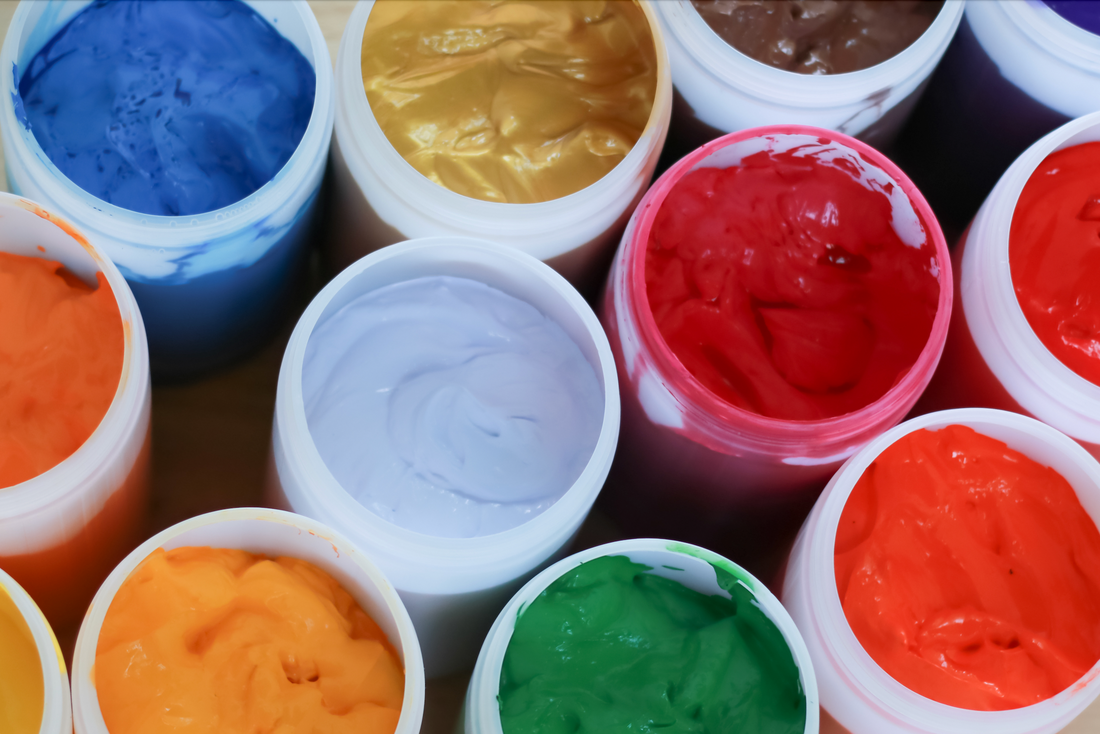Screen printing is a popular method of printing images or designs on various surfaces. The process involves applying ink through a stencil onto a substrate, such as fabric, paper, or plastic. One of the essential components of the screen printing process is ink. Screen printing ink comes in a variety of types, each with its unique characteristics and properties. In this beginner's guide, we will explore the different types of screen printing inks and their applications.
Understanding Screen Printing Inks
Before we dive into the different types of screen printing inks, it's essential to understand the two primary types of ink: plastisol and water-based ink.
Plastisol Ink
Plastisol ink is a type of ink made from PVC particles suspended in a plasticizer. This ink is known for its versatility and ability to create a thick, opaque layer on the fabric. Plastisol ink is ideal for printing on dark-colored fabric as it provides better coverage and opacity. It is also easy to use and doesn't require any special equipment for curing.

Example of Plastisol Ink
Water-Based Ink
Water-based ink is a type of ink that uses water as a base instead of a plasticizer. This type of ink is more eco-friendly and produces a softer, more breathable print on fabric. Water-based ink is also ideal for printing on light-colored fabric as it produces vibrant and bright colors. However, it requires more specialized equipment for curing.

Example of Water-Based Ink
Types of Screen Printing Inks
Now that we have an understanding of the two primary types of inks, let's explore the different types of screen printing inks and their applications.
Plastisol Inks
- Standard Plastisol Ink
- High-Opacity Plastisol Ink
- Low-Cure Plastisol Ink
- Foil Plastisol Ink
- Glitter Plastisol Ink
Water-Based Inks
- Standard Water-Based Ink
- Discharge Water-Based Ink
- Silicone Water-Based Ink
- Puff Water-Based Ink
- Metallic Water-Based Ink
Choosing the Right Screen Printing Ink
When choosing the right screen printing ink, several factors should be considered, such as the substrate, the design, and the intended use. Here are some tips for selecting the right ink:
- Consider the fabric type - Plastisol ink is ideal for printing on cotton, polyester, and blended fabrics, while water-based ink is better suited for natural fibers such as cotton, bamboo, and silk.
- Determine the design - If your design requires bright colors and a soft feel, water-based ink may be the better choice. If you need to print on dark fabric, plastisol ink is your best bet.
- Consider the curing method - Plastisol ink can be cured at lower temperatures, which is ideal for heat-sensitive fabrics. Water-based ink requires higher temperatures and longer curing times.
Caring for Screen Printed Garments
Proper care is essential for maintaining the longevity of screen printed garments. Here are some tips for caring for your screen printed garments:
- Wash your garments inside out.
- Use a mild detergent and avoid bleach or fabric softeners.
- Wash in cold water and tumble dry on low heat.
- Avoid ironing directly on the print.

Conclusion
Screen printing ink plays a crucial role in creating high-quality and long-lasting prints. When choosing the right ink, consider the substrate, design, and intended use. With this beginner's guide, you can make an informed decision when selecting the right ink for your next screen printing project.
FAQs
- Can I mix plastisol and water-based inks?
Answer: No, mixing plastisol and water-based inks is not recommended as they have different chemical compositions and curing requirements. Mixing them can result in poor adhesion, cracking, or flaking of the print. It's best to use either plastisol or water-based ink for a single print job.
- How do I cure my screen printed garments?
Answer: Plastisol ink can be cured using a heat press or conveyor dryer, while water-based ink requires a heat tunnel or oven.
- Can I use screen printing ink on other surfaces besides fabric?
Answer: Yes, screen printing ink can be used on various surfaces such as paper, plastic, metal, and wood.
- Can I use regular inkjet ink for screen printing?
Answer: No, regular inkjet ink is not suitable for screen printing as it is not thick enough and can clog the screen.
- How long does screen printing ink last?
Answer: Screen printing ink can last for several years if cared for properly. However, the lifespan can vary depending on the ink type, fabric type, and care instructions.
Equipment
Unveiling the Best Screen Printing Machines for Beginners: Your Ultimate Guide
How to Choose the Right Screen Printing Press for Your Business: A Comprehensive Guide
The Ultimate Screen Printing Kit Buying Guide
Ink
A Beginner's Guide to Screen Printing Inks
Why Water-Based Screen Printing Ink is the Future
The Benefits of Using Discharge Screen Printing Ink
Screen
How to Choose the Right Screen Printing Mesh for Your Project
Everything You Need to Know About Screen Printing Frames
The Ultimate Guide to Screen Printing Emulsion
Technique
7 Essential Screen Printing Techniques for Beginners
How to Screen Print on Fabric: A Beginner's Guide
The Basics of Screen Printing on Paper
Service
Get Custom Screen Printing for Your Business or Event
Find Screen Printing Services Near You
The Best Online Screen Printing Services for Your Business
Supplies
The Essential Screen Printing Supplies You Need

